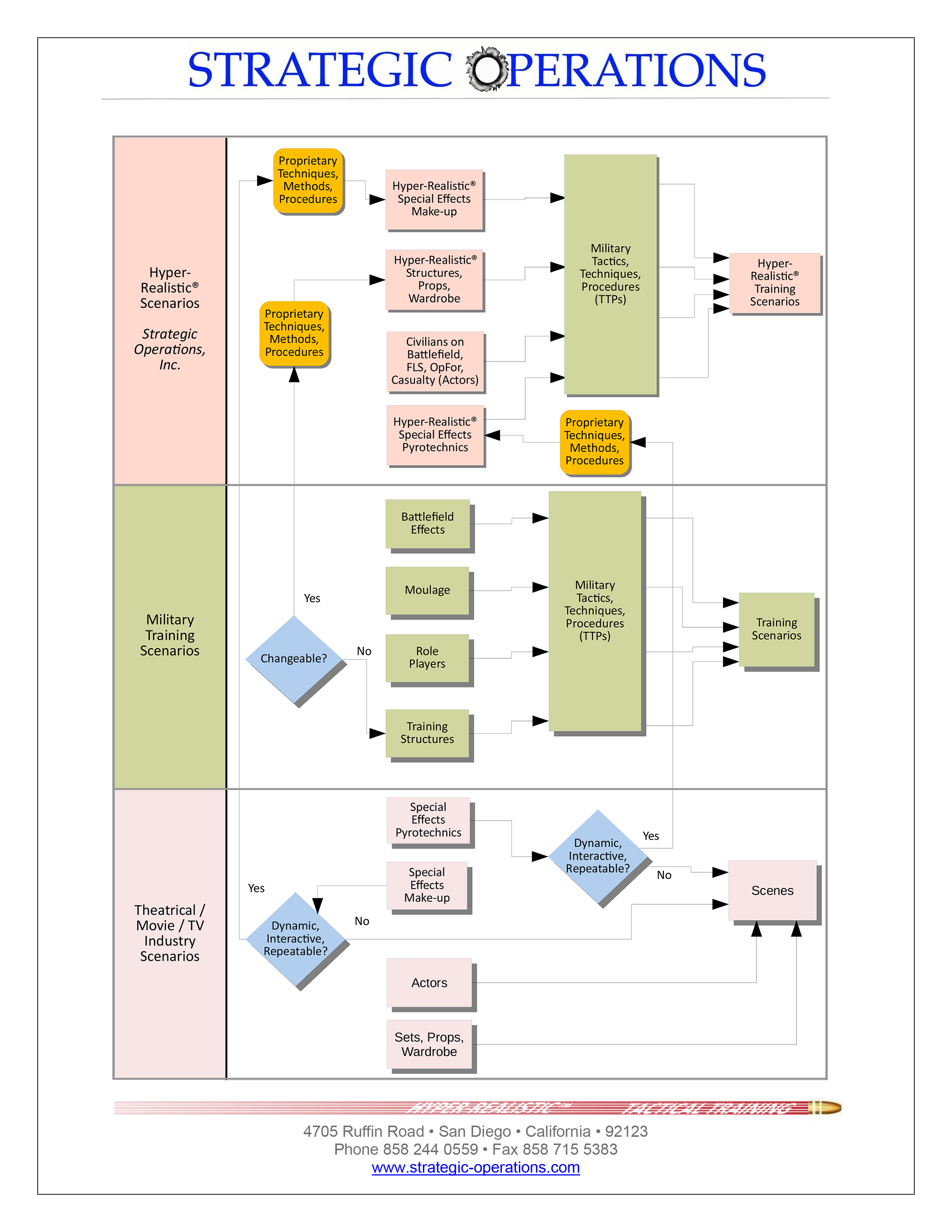Hyper-Realistic® Training
Strategic Operations Inc. (STOPS), defines Hyper-Realistic® as “such a high degree of fidelity in the replication of battlefield conditions in a training environment that participants so willingly suspend disbelief that they become totally immersed and eventually stress inoculated".
The Value of Hyper-Realistic® TrainingLarge numbers of personnel can experience life threatening and traumatic conditions/situations in a training environment that truly reflects real world conditions, but in a controlled, duplicatable, and dynamic setting. A Defense Science Board study found that 50 percent of all casualties in war occur in the first five to six significant exposures to combat. After this exposure, the rate drops to less than 6 percent. At the STOPS Tactical Training Laboratory – equipment, methods, and tactics can be tested - in real world conditions - without the real-world casualties. This is the value of Hyper-Realistic® training. |
